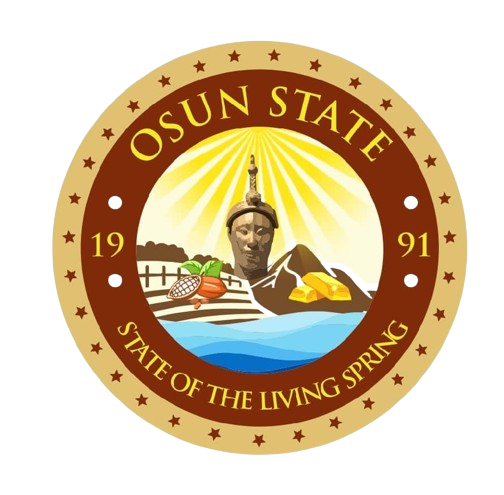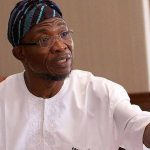
Sustaining Development In a recession By Niyi Akinnaso
The focus on the slow pace of recovery from the ongoing recession and the readiness with which the President Muhammadu Buhari administration is being blamed for the present economic problems could make critics forget the real causes of the problems. Yet, with hindsight, it is clear to see that, within the past five years, Nigeria has been afflicted with four major economic woes, leading to incremental drain on federal allocations to the states.

First, in 2012, the Federal Government negotiated on behalf of the states an increase in minimum wage structure with various workers’ unions, which, even at that time, most states could not immediately comply with.
Second, in 2013, just as many states were adjusting their budgets to cope with the wage increase, federal allocations got suddenly reduced by nearly 40 per cent due to an alleged theft of up to 400,000 barrels of crude oil per day. Some states responded with suspension of a number of capital projects in order to be able to pay salaries, while others began to gradually pile up arrears of salaries.
Third, by 2014, oil prices had begun to dip, leading to more than 50 per cent crash in the global barrel price of crude oil by 2015. By December 2016, a combination of these three factors plus the OPEC-imposed reduction in oil production volume led to a drastic reduction in federal allocations.
Fourth, as the anti-corruption campaign has revealed within the past year, the administration of President Goodluck Jonathan engaged in unprecedented looting of the treasury, drew down on foreign reserves and the Sovereign Wealth Fund, and mopped up dollar supply in the country in preparation for the 2015 general election, which was characterised by what was described as “dollar rain”.
It was against these backgrounds that the non-payment of salaries took hold, leading to arrears of up to 12 months in some cases. Besides, the construction of capital projects got frozen in many states.
Osun State was used as a scapegoat for non-payment of salaries by critics, who were eager to discredit the various people-oriented projects going on in the state. The projects included the construction of mega schools for primary, middle, and high schools; the building and renovation of hospitals; the establishment of a garment factory for the production of school uniforms; the construction of roads and bridges; and the establishment of an award-winning school-feeding programme, now being emulated by the Federal Government and some states.
I visited Osun again last week, and, having observed several ongoing projects there, I could not help asking the critical question: How, against all odds, are these people-oriented projects being sustained, while also paying workers’ salaries?
The answer lies in part in a mixed financial model, including derivative or flexible financing, which provides a pool of funds for infrastructure and other state projects. The funds came from the Central Bank, Sukuk Bank, the World Bank, and other sources, including a concessionary loan by the Federal Government, and were targeted at certain specific projects, some to completion. The funds come with a tag: they must be expended on the specific projects or programmes for which they were sourced or borrowed.
The loans became necessary because previous administrations had developed a large corps of civil servants, numbering over 35,000, that is, about one per cent of the state’s population, which gulped about 70 per cent of the state’s revenue. The only way he could support his infrastructure and social development programmes, while meeting the huge recurrent expenditure, was to raise funds. In addition to loans, Aregbesola also embarked on an aggressive drive to raise internally generated revenue, which has started to yield dividends.
It is these funds which make several ongoing projects, including the construction of roads and bridges, possible, despite the recession. In particular, the building of schools continues, because it is being funded in part by Sukuk Bank. Even the worst of detractors will acknowledge the high standard of the over 60 completed schools. One of them, Osogbo High School, launched by President Muhammadu Buhari last year, can be viewed on the Internet. What is important for present purposes is that construction goes on in many more schools, including Ataoja High School, Osogbo, which is 90 per cent completed. In addition to the mega schools, 277 model schools with 1,811 modern classrooms have been built or rehabilitated. The schools are being furnished with nearly 27,000 chairs and tables.
A lot of planning went into many of the projects in order to ensure sustainability. Take the school feeding programme, for example. It is not for nothing that it is the longest running programme of its kind in the country today. What is unknown to the casual observer is the complex of activities and the variety of workers associated with the programme, which, in turn, allows it to be sustained.
For example, farmers who grow the food, market women who sell farm produce, and the vendors who cook the food, were all seeded or supported one way or the other before the commencement of the programme. Thus, in collaboration with the World Bank RAMP 2 programme, over 250 kilometres of rural roads were rehabilitated or freshly constructed to aid the transport of farm produce from rural farms to the cities. In addition to completed ones, another set of 250 kilometres of roads is being constructed.
The food vendors were provided with the needed equipment, for which minimal deductions are made from their monthly payments, and they were encouraged to set up local restaurants in their communities in order to boost local nutrition. Today, all these workers have developed a vested interest in the sustainability of the school-feeding programme, which, today, provides nutritious meals to over 253,000 elementary school children every school day.
In addition to the construction or rehabilitation of rural roads, over one million rural dwellers across the state have benefited from 356 projects in education, rural electrification, primary health care, and potable water. These rural projects, some of which are still ongoing, are made possible by a partnership between the World Bank and the Osun Agency for Community and Social Development.
It is the continuation of various projects across the state which once led some petitioners to argue that Aregbesola had diverted the salary bailout to pay contractors. What is interesting here is that the workers themselves are not complaining, because they know where the governor is coming from.
As far back as July 2015, Aregbesola had reached an agreement with the workers on a modulated salary regime. It ensures that full salaries are paid to the most vulnerable workers on levels 1-7, while their senior counterparts are paid 50 per cent or more of their salaries, depending on the state’s monthly revenue. He has transparently deployed the salary bailout, the Paris Club refund, and appropriate monthly allocations to keep the salary payment agreement up-to-date.
It is fair, of course, to ask when the arrears of salaries will be paid to senior staff on less than their full pay. Nevertheless, it is important to appreciate the effort being made by the Osun State government, not only to survive the ongoing recession, but also to keep capital and social projects on course, including the celebrated welfare package for the elderly.
The multiplier effect of the various projects on investment cannot be overlooked. For example, the local brewery has since doubled its output; a Computer Assembly Plant has been set up in the state; and the Omoluabi Garment Factory is now the largest of its kind in West Africa.
Today, Osun ranks very low in unemployment and poverty rate, compared to the national average. It ranks second best among 36 states on the Human Development Index and is the 7th largest economy in the country.
Source: PUNCH


